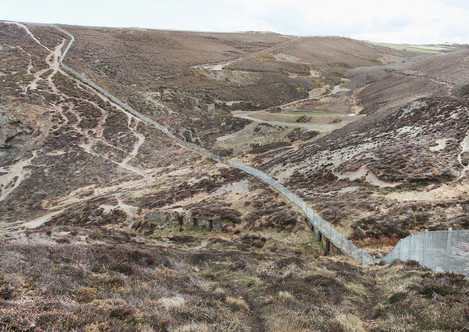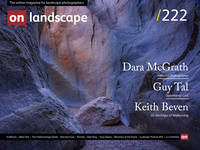Featured Photographer

Dara McGrath
My photographic practice looks at the intersection of landscape, history, environment and in-between spaces. Places that have come to their end and exist in urban, suburban and rural contexts that are in a transitory shift to becoming something else. Somewhat forgotten.

Michéla Griffith
In 2012 I paused by my local river and everything changed. I’ve moved away from what many expect photographs to be: my images deconstruct the literal and reimagine the subjective, reflecting the curiosity that water has inspired in my practice. Water has been my conduit: it has sharpened my vision, given me permission to experiment and continues to introduce me to new ways of seeing.
Earlier this year I came across Dara McGrath’s ‘Project Cleansweep’. My line into it was the euphemistically titled ‘Blue Lagoon’ at Harpur Hill, a few miles up the road from me towards Buxton, Derbyshire. It was once again drawing visitors, for the wrong reasons, and it irritated the heck out of me when I heard BBC Radio 4 refer to the site as ‘a beauty spot’. Nothing could be further from the truth, and in searching online for its pH (the chemical truth) to correct them I came across Dara’s project. Maintenance Unit 28 at Harpur Hill was the largest UK reception and storage depot for chemical weapons during WWII and later was used for the disposal of captured chemical weapons until its closure in 1960. The unwise, and those swayed by Instagram, have been known to attempt swimming in a flooded quarry contaminated and turned blue by caustic chemicals; periodically it is dyed black as an added deterrent.
Gruinard Island rang bells too, as I knew a little of its history from our time in Scotland. In 1942, the Ministry of Defence conducted a series of experiments which tested Anthrax bombs against livestock on the island. The weapons were so successful that the island was declared out of bounds for decades.
Dara’s documentary series ‘Project Cleansweep’ takes its name from a 2011 Ministry of Defence report on the risk of residual contamination at 14 UK sites used in the manufacture, storage and disposal of chemical and biological weapons. A newspaper article led Dara to carry out his own research, and look at over 60 sites around the UK which were used by the MoD for the testing of biological and chemical weapons throughout the 20th century. It’s a revealing insight into landscapes that we think we know, and some that we don’t.

Site-21, Nancekuke, Cornwall
In the 1950s, Nancekuke was the UK’s main site for the production of nerve agents. When it closed, remnants of many of the contaminated buildings and equipment were dumped in old quarries and mine shafts on and around the site, where they remain to this day. Today the site is an active military radar station. Some years ago, the Nancekuke Remediation Project was undertaken to assess the site to determine what was buried there.
Would you like to start by telling readers a little about yourself – where you grew up, your early interests and education, and what that led you to do?
I was born in the mid-west of Ireland. Now I’m living in the south of the country in Cork City. Between then I lived in Berlin, Zurich, Vienna, Luxembourg and Dublin. After school, I trained as an aircraft mechanic and subsequently got a degree in aeronautical engineering.

